The Hoka Cielo X1 was one of the best running shoes launched in 2024 and I’ve run more miles in the Cielo X1 since its release than any other. However, I mostly used it for training because its high weight made it a less impressive racer than the best carbon plate running shoes.
That’s why I’m delighted with the updates made to the Hoka Cielo X1 2.0, which is a lighter and more aggressive racing shoe than the original. While it loses some stability and is not a shoe I’d use for lots of training like the original, the CIelo X1 2.0 can now go toe-to-toe with the best racers on the market like the Asics Metaspeed Sky Paris and Nike Alphafly 3.
In my Hoka Cielo X1 2.0 review I’ll run through the changes made to the shoe and my testing, and explain why I rate it so highly as a racing shoe.
Hoka Cielo X1 2.0 review: price and availability
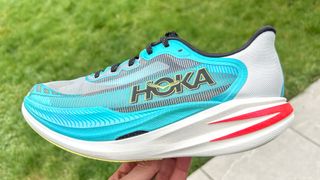
The Hoka Cielo X1 2.0 launched in February 2025 and costs $275 in the U.S. and £250 in the U.K., the same price as the Hoka Cielo X1. It’s one of the more expensive carbon plate running shoes, and some of the best available come in considerably, including the Asics Metaspeed Sky Paris and Puma Deviate Nitro Elite 3.
Hoka Cielo X1 2.0 review: design and fit
The Hoka Cielo X1 2.0 is available in the Frost/Black colorway I tested and it fit me well in my normal running shoe size. The fit is quite narrow and dialed-in around the toes, as you would expect from a racing shoe, but I had enough room for long runs and a secure hold around the heel and midfoot.
Hoka says the stack height of the shoe is under the 40mm limit at the heel set by World Athletics, so it’s a legal road racing shoe for elites (non-elites don’t have to worry about this limit too much), and it has a drop of 7mm from heel to toe.
It’s the same stack height and drop as the Cielo X1, but Hoka has brought the weight of the Cielo X1 2.0 down to 7.5oz in my US men’s size 9.5, a substantial drop on the 8.9oz weight of the original shoe in the same size, making the 2.0 much more competitive with other racers.
Upper
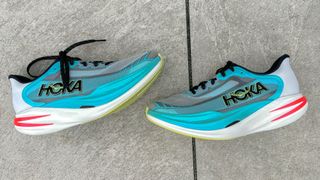
A new upper is part of the reason why the Cielo X1 2.0 weighs less than its predecessor, with the jacquard mesh on the new shoe being very thin and breathable. There is a little padding on the collar of the shoe to cradle the Achilles tendon, but otherwise the upper is as stripped back as possible.
The material used feels a little plasticky to the touch, which might reduce the amount of after the upper absorbs in wet conditions, which can add weight during longer races. I found the upper in general to work well for fast runs, holding the foot securely without causing any irritation or hot spots
Midsole
Like the Cielo X1, the Hoka Cielo X1 2.0 used two layers of PEBA foam in its midsole, which sandwich a carbon plate. The shoe also has a supercritical TPEE foam sockliner, adding another layer of springy cushioning underfoot.
The Cielo X1 2,0 has a dramatic rocker shape that helps to push you onto your forefoot with each stride, and has sidewalls of foam in the forefoot to increase stability there.
This is needed because the Cielo X1 2.0 is not a stable shoe, with large cutouts of foam including one on the medial side to reduce weight. The 2.0 also has a narrower base than the Cielo X1, reducing its stability.
Outsole
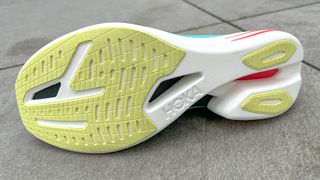
Hoka has changed the outsole material on the Cielo X1 2.0 to its ‘sticky rubber’ which provides a better grip in wet conditions. I found that the Cielo X1 was a bit slippery on greasy roads and the updated outsole does deliver better traction.
The rubber is used sparingly, covering most of the forefoot along with two sections at the heel of the shoe. This does protect the soft midsole foam in the key impact areas you’ll hit when running, and I’ve not seen any undue signs of wear and tear on the outsole after 40 miles of running.
Hoka Cielo X1 2.0 review: running performance
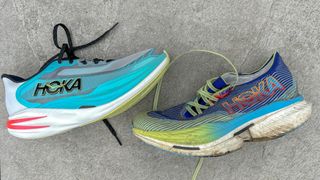
Even as a huge fan of the original Hoka Cielo X1, I could see its limitations. For me, it was best used as a fast training shoe thanks to its stable, bouncy, and durable design, and its high price made that a hard sell when you could get great plated trainers like the Hoka Mach X2 or Saucony Endorphin Speed 4 for a lot less.
While I did a couple of races in the Cielo X1, it was a bit too heavy to consider one of the best racers available, so the big change I wanted to see in the Cielo X1 2.0 was a drop in weight. That box has certainly been ticked, and Hoka has managed to do this without reducing the high level of bounce in the shoe.
The Cielo X1 2.0 delivers a similarly springy and fun ride to the original while being lighter, and it also has a more aggressive feel from the rocker as well. While the Cielo X1 felt like a fast, fun shoe you could use for a variety of runs, the Cielo X1 2.0 is clearly geared for racing and feels unnatural to run in at slower paces.
I used it for several tough sessions during my marathon training, including an hour-long progression run, an alternating pace 10-miler, and a tempo 10-mile run, and the speed of the shoe is clear. It’s also comfortable for longer efforts, if not quite as much so as the original.
The bigger trade-off you get with the new shoe, however, is stability. The original Cielo X1 was one of the more stable carbon super-shoes available, whereas I’d say the Cielo X1 2.0 is one of the least stable, partly because of the big cutout on the medial side of the shoe and the narrower base.
I don’t mind this myself — I want my racing shoe to be light and fast above all and I’m willing to trade stability for that — but if you’re someone who enjoyed or needed the extra stability of the Cielo X1, the 2.0 might not be for you.
Should you buy the Hoka Cielo X1 2.0?
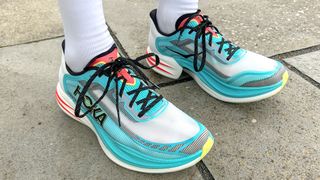
The Hoka Cielo X1 2.0 is one of the best racing shoes available right now, with a fast, propulsive ride that’s also very enjoyable. It’s not all that stable and is best reserved for your fastest training sessions and races, but that’s the case with most racing shoes, with super-trainers like the Mach X2 or cushioned shoes like the Hoka Clifton 10 being designed to take on more daily miles.
I rate the Cielo X1 2.0 in my top tier of carbon plate shoes, along with the likes of the Asics Metaspeed Sky Paris and Nike Alphafly 3. The Metaspeed Sky Paris is lighter and cheaper and is my standout overall, but the Hoka has more spring and a more noticeable rocker, which some runners might prefer.
Another alternative to consider is the Puma Deviate Nitro Elite 3, which delivers a high level of performance at a much lower price, though it’s not as propulsively springy as the Hoka Cielo X1 2.0.
If you need a more stable super-shoe then the Saucony Endorphin Pro 4 might be worth looking at, or scout out a deal on the original Cielo X1, which should hopefully be available in sales now the new shoe is out.
While some might miss the feel of the Cielo X1, I think Hoka made the changes needed with the Cielo X1 2.0 to make it a competitive racer, and it’s definitely a shoe I plan to look forward to pulling on for some of my own races in the future.



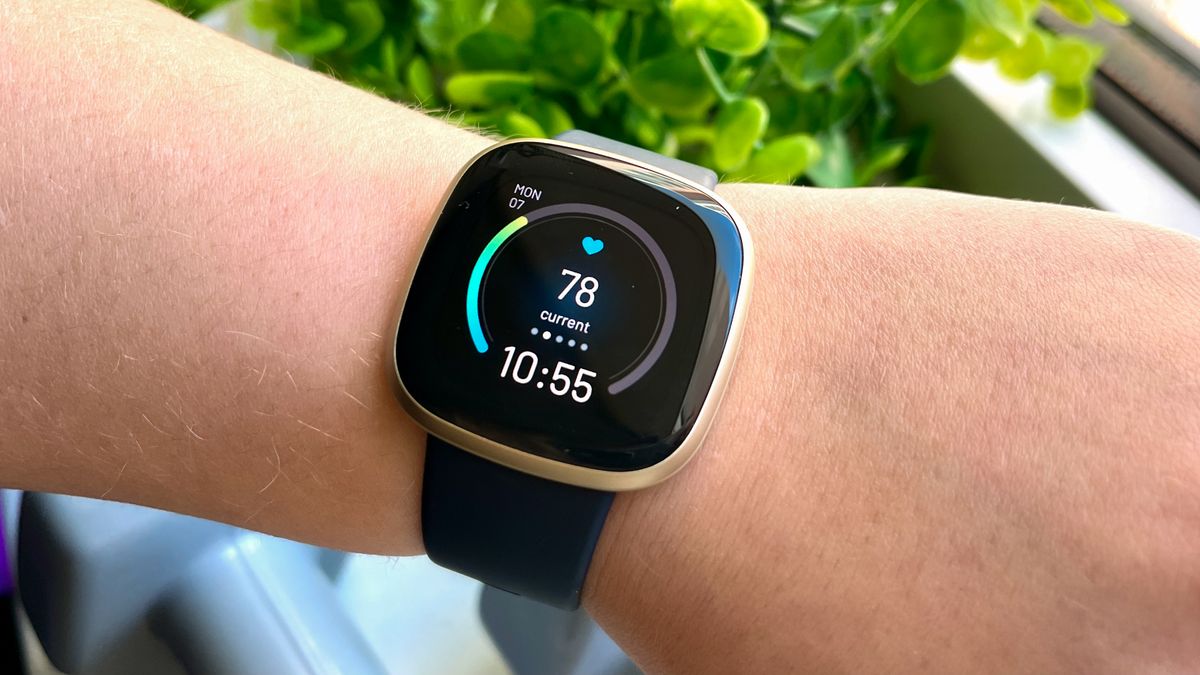

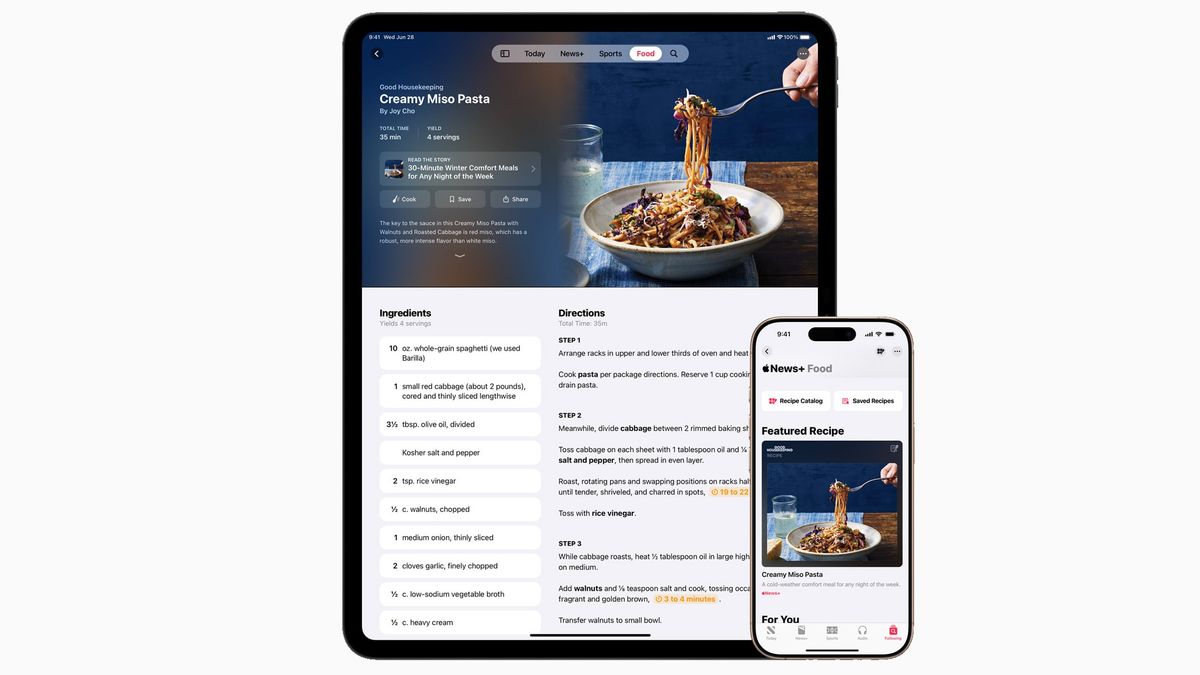

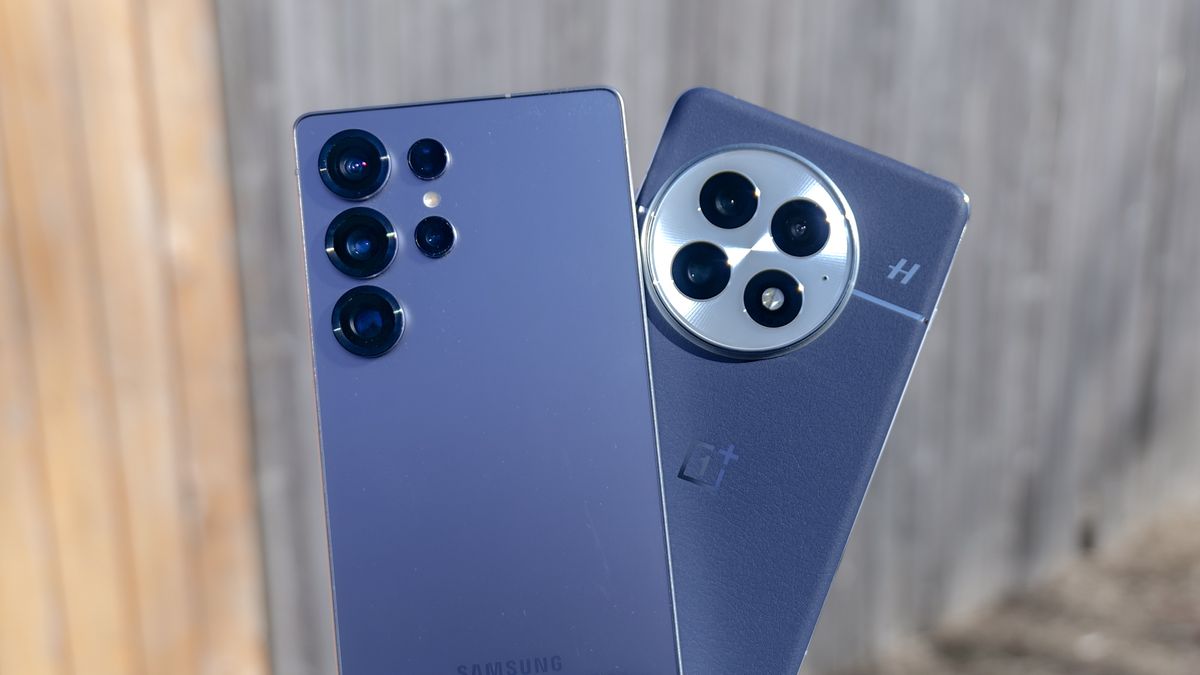


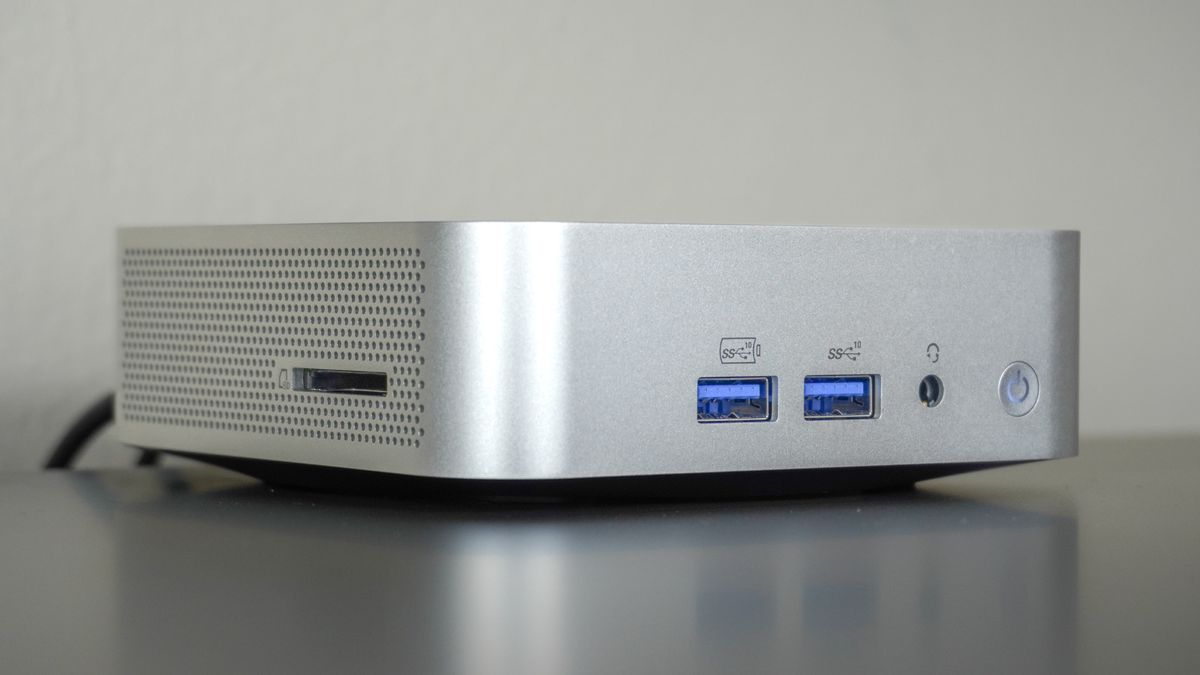

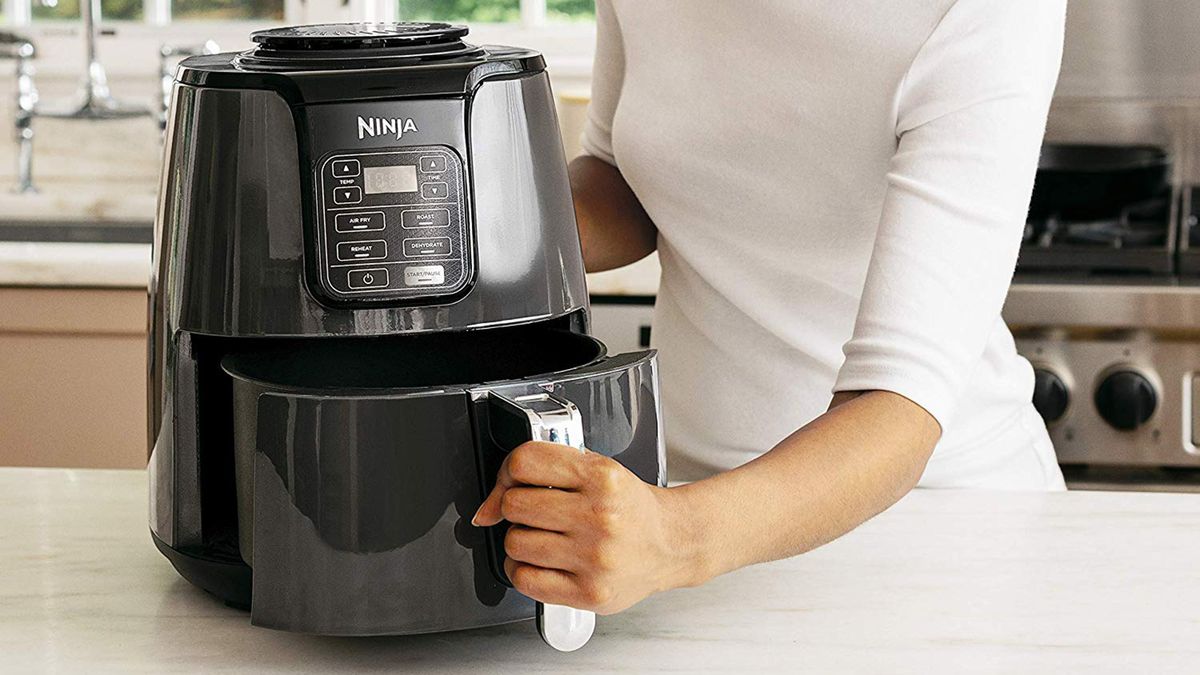







 English (US) ·
English (US) ·